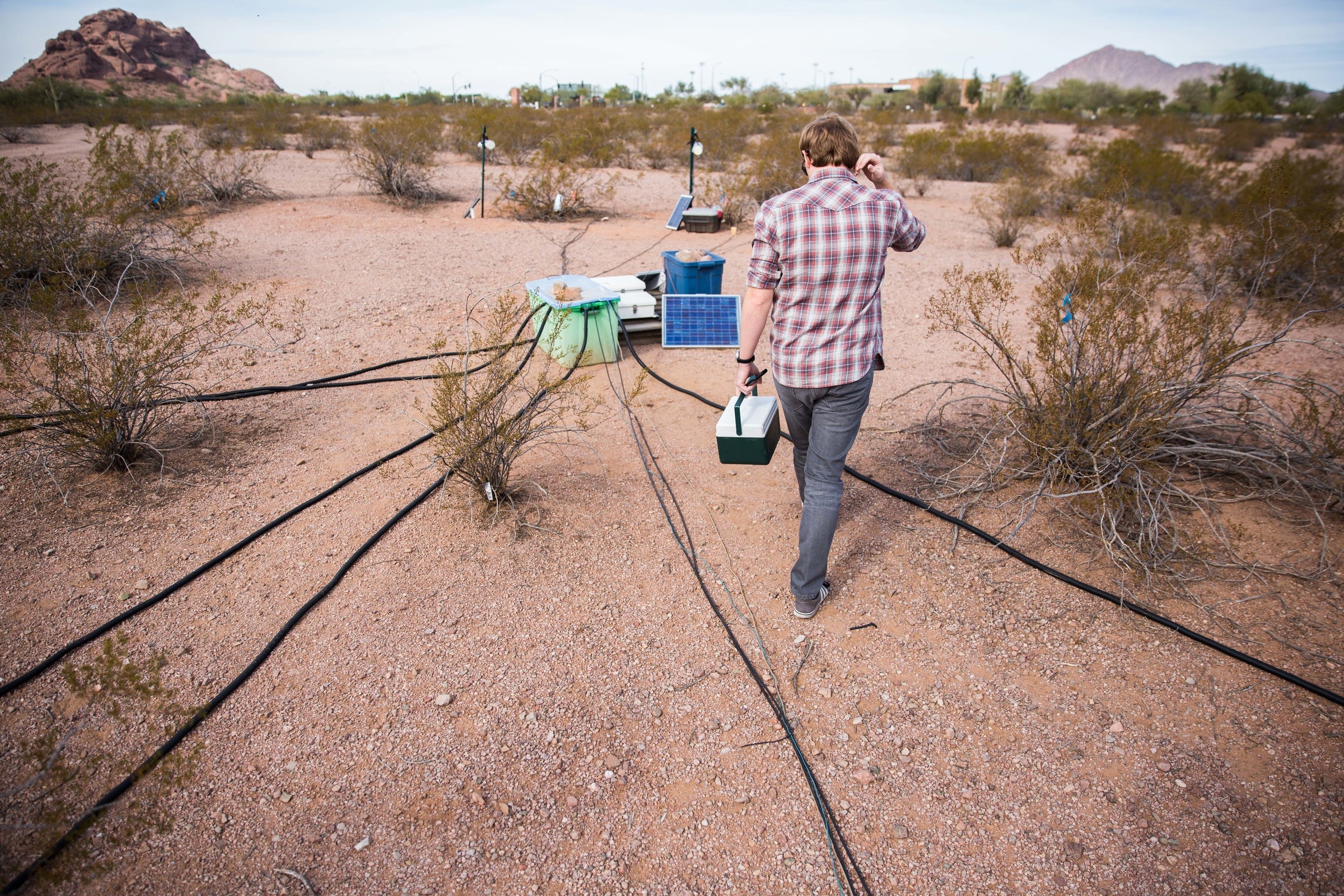Editor's note: This story is part of a series of student profiles that are part of our December 2015 commencement coverage.
Samuel Teegarden never got much out of high school until he took an Advanced Placement course on environmental science.
It was one of the few classes that actually caught his attention and engaged him.
Now the Tucson native is about to graduate with a Bachelor’s of Science degree in conservation biology and ecology from the School of Life SciencesThe School of Life Sciences is a unit of ASU's College of Liberal Arts and Sciences. at Arizona State University.
“When it came to choosing careers, knowing that I’m going to be putting a lot of effort into whatever I do, I want that effort to result in the greatest amount of impact, not only for my life, but other people’s lives and the well-being of ecosystems we live in,” Teegarden said.

One of Samuel Teegarden's interests are Arizona's "sky islands," isolated mountaintop areas of great biodiversity. He calls them critical to ecosystem functioning and a sense of place.
Photos by Deanna Dent/ASU Now
Teegarden’s journey from middling student to passionate scientist could have been by train; slow at first, then becoming unstoppable.
He started at the University of Arizona, where a lack of focus caused him to drop out after a year. He enrolled at Phoenix College, where he earned his associate’s degree. As part of the Maricopa Community College–ASU transfer program, he moved into ASU, where he earned his bachelor’s in one and a half years.
“Since I’m from Tucson, you might imagine I have some certain biases from sports conflicts, but honestly those biases that were there went away pretty quickly,” the 24-year-old said.
As a proud Arizona native, Teegarden said the Grand Canyon State’s basins and ranges call to him.
“One of my interests is the Arizona ‘sky islands,’ the mountains here in the basin and range province,” he said. “If you can imagine the desert being a vast sea, with no water, the mountains are the islands. They’re hosts to enormous amounts of biodiversity. They’re critical to ecosystem functioning and a sense of place and identity here in Arizona. I like all the stuff that’s going on here where I’m from; it’s very unique.”
Teegarden’s time at ASU has been brief but meaningful.
“The time that I have had, I had the maximum exposure I needed,” he said. “I’ve been able to work on projects here at the Desert Botanical Garden.”
He joined the School of Life Sciences undergraduate research program, rising to paid researcher. “It’s kept me very busy,” he said.
Samuel Teegarden takes samples from creosote bushes at the Desert Botanical Garden on Dec. 4. He is studying the ability of plants to respond to drought and temperature stress. Photo by Deanna Dent/ASU Now
At the Desert Botanical Garden, he studied concentrations of sugar and starch in creosote and how that affects their ability to respond to drought and temperature stress.
He also studied the same issue in five types of trees growing in four forest types in the Four Corners areas.
“That was a much bigger macrosystem project that I did all the chemistry and analysis in,” he said. “It’s applying these techniques to get the big-picture understanding of how the increasing threats of drought and exposure to high temperatures affect the plant’s ability to respond to those changes.”
He had 175 tree core samples, and only two could be ground at the same time.
“I spent most of the summer just grinding samples,” he said. “It’s really interesting; after a year of working primarily on chemistry, you get to see the results of your hard labor in the form of pretty graphs and stuff.”
Teegarden eventually wants to own his own environmental consultancy. Right now he’s hunting for an entry-level job as a technician or environmental scientist with private-sector companies advising developers and contractors in permitting.
He and his girlfriend just bought their first house in the Encanto neighborhood in central Phoenix. “We got a 30-year mortgage, so we’ll be here for a while,” he said.
He will be remembered at the School of Life Sciences for a while, too.
“At ASU he has done extremely well and been a fantastic addition to the research community,” said Katelyn Cooper, academic success coordinator in the School of Life Sciences. “He is a member of the Ogle lab and is doing really important work. He is very passionate about his future career. … He is definitely someone who represents our ASU students, and I think he will go on to do great things.”
More Environment and sustainability

'Earth Day Amplified' promotes power of collective action
Everybody loves the concept of sustainability. They want to do their part, and the chance to say they’ve contributed to the well-being our of planet.But what does that actually mean?Arizona State…

Rethinking Water West conference explores sustainable solutions
How do you secure a future with clean, affordable water for fast-growing populations in places that are contending with unending drought, rising heat and a lot of outdated water supply infrastructure…
Meet the young students who designed an ocean-cleaning robot
A classroom in the middle of the Sonoran Desert might be the last place you’d expect to find ocean research — but that’s exactly what’s happening at Harvest Preparatory Academy in Yuma, Arizona.…



